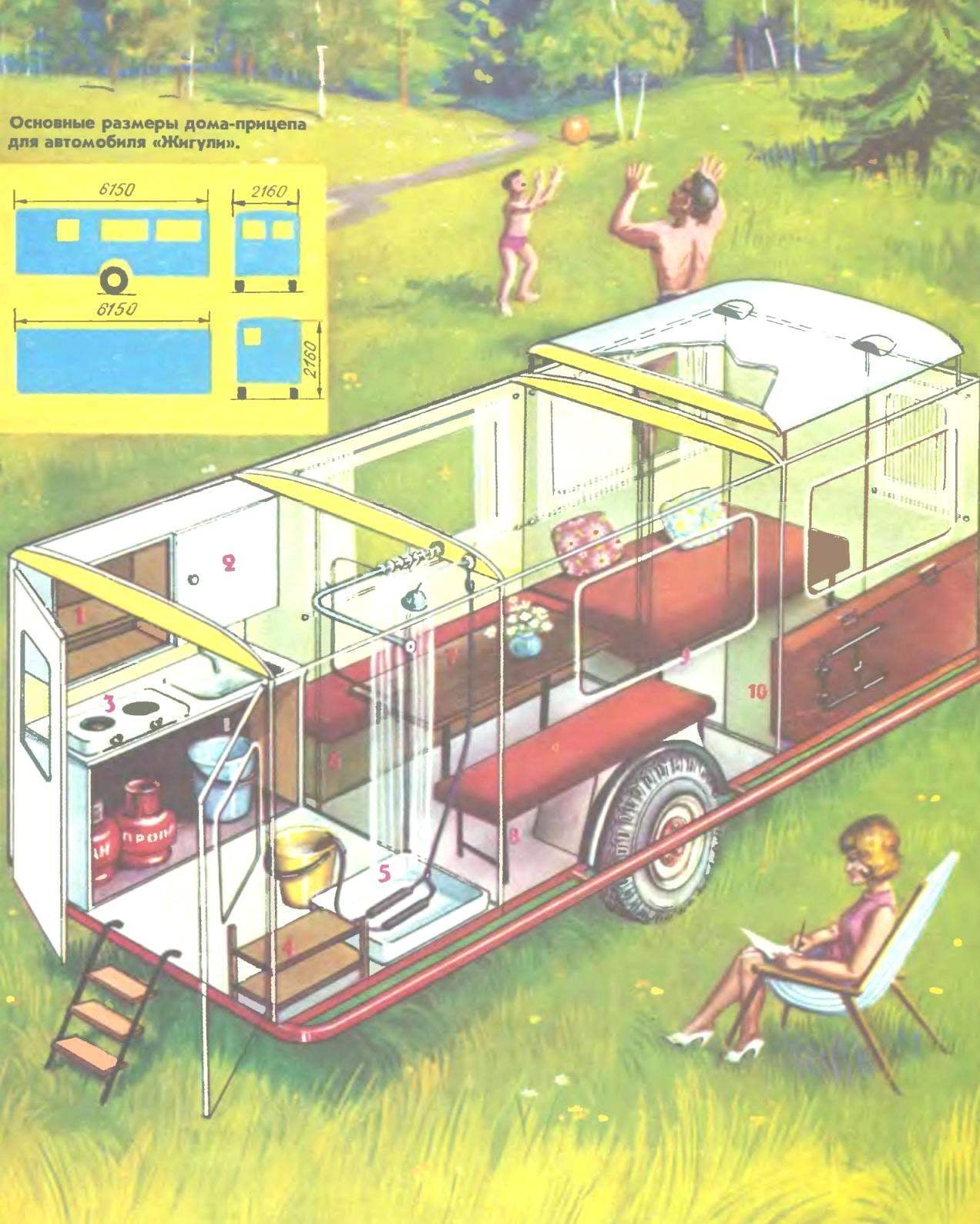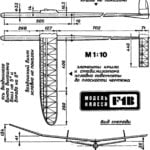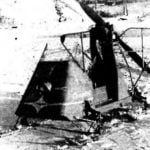 No, we are not talking about shifting residential home from one place to another, what we have witnessed in the period of reconstruction of our cities, and about unusual homes-travelers — cars. It is very difficult to tell who was a pioneer of this new technical direction and on the roads what country had the first car in the back which placed the whole apartment. Most likely, the house on wheels was created simultaneously in many countries, by many designers, and each solved the problem differently- depending on their tastes and possibilities either from the profile of the automotive company where he worked. Under this originated and the principal directions is clearly determined to date, which can be classified roughly as follows.
No, we are not talking about shifting residential home from one place to another, what we have witnessed in the period of reconstruction of our cities, and about unusual homes-travelers — cars. It is very difficult to tell who was a pioneer of this new technical direction and on the roads what country had the first car in the back which placed the whole apartment. Most likely, the house on wheels was created simultaneously in many countries, by many designers, and each solved the problem differently- depending on their tastes and possibilities either from the profile of the automotive company where he worked. Under this originated and the principal directions is clearly determined to date, which can be classified roughly as follows.
A special vehicle like a bus or minibus, the internal volume of which is planned and equipped for long stays of groups of tourists, families or sports teams. All the amenities in this vehicle needs to be stationary and to comply with sanitary regulations in force in the areas of its application. These vehicles (Fig. 1) currently issued by some foreign companies and has found application in tourism, as well as conducting geological exploration and other field works, the construction of new roads, pipelines, airfields, etc.
Body and combination of body, mounted temporarily on normal cars and creating a minimum of comfort for a short stay, for example, in the period of holidays, vacations, short tourist trips. Particularly widespread in this group of homes received roof boxes installed instead of the rear bars. These tanks are equipped with beds (they can be used even during movement, without hindering passengers, in the cabin). The most successful combination of work on cars that have major body type “universal” and “truck” (Fig. 2).
Special salon equipment serial city cars. The simplest example is the layout of the rear seat to sleep, widely used by Soviet sleeper. There is a more comfortable design, when the backrest of the right front seat removed and a bed became stationary, being located along the interior. It is quite clear that body type “universal” opens the greatest opportunity of conversion of the interior of the car in the living room (Fig. 3).

Fig. 1. A typical design of a modern car-house for 5-7 people.

Fig. 2. Tourism add-ons in serial cars.

Fig. 3. Car type sedan with a modified interior layout, designed for short stays of 2-3 people.
House on wheels, whatever it was, has many advantages. As for amenities that can be provided and implemented, they are on the verge of fiction: air-conditioning, the use of aerosol therapy (in areas with polluted air or harmful insects), and high-speed devices for cooking and water heating, television and radio installations and much, much more… And in the case that the car-house will have increased permeability, it is possible to drive right up to the place of hunting or fishing.
The purpose of this article is not only to acquaint readers with the most interesting branch of modern automotive industry, but also to analyze the experience of our Amateur designers to determine the prospects of their activities 6 creating homes on wheels.
TECHNICAL CONDITIONS AND RULES
As you know, enthusiasts microelementary obligated to comply with “Technical conditions”, developed and approved by the traffic police in 1953, repeatedly published in journals (see “M-K”, 1967, № 5 and 1968, No. 8 ), and also published as a separate booklet.
According to this document a homemade car shall be designed and constructed in accordance with the stringent requirements for dimensions, cubic capacity of engine, design of individual mechanisms and the weight data. Unfortunately, they severely limit the possibility of building a spacious home on wheels (dimensions not exceeding 3000X1500X1500 mm), which allows at best to create a body “wagon” layout. As an example, it is possible to recall cars built Yu Baranov (Moscow), A. Prikhod’ko (Kiev), N. Yakovlev (St. Petersburg) after the publication in our magazine of the article by P. Zack “minimax — bigger on the inside”.
The body “wagon” layout, made in the dimensions allowed by the “Technical conditions”, allow the installation inside, except the driver’s seat, one stationary bed and a small working table. So, we need to look for some other ways other technical solutions.
These paths are opened, if you carefully read the “Technical conditions for the construction of trailers to passenger cars”. They allow the development of a trailer with the following dimensions: length — up to 1.5 of the length of the towing vehicle (i.e., trailer to “Lada” can have a length 6150 mm), width equal to the width of the towing vehicle plus 400 mm (200 mm in each direction), a height of 1 1/2 of the height of the towing vehicle (for the same “Zhiguli” — 2160 mm). It turns a volume of about 24 m3. The floor space is 12 m2! This is a good living room, allowing many options for interior layout. Our magazine at the time, acquainted readers with a very interesting trailer Teremok, which was built by R. monk of Elektrostal of the Moscow region (see “M-K”, 1973, No. 6). But his “mansion” is much less — only 3000X1900X2000 mm.
Figure 4 shows the relative size of vehicles and trailers the dimensions, allowed the traffic police of the USSR.

Fig. 4. The relative size of the most common cars of domestic production and trailers that meet the requirements of GAI of the Soviet Union
In order not to Repeat the “Technical conditions for the construction trailers,” we suggest interested readers to visit the nearest branch of the traffic police.
Thus, our proposed design is non-self-propelled house on wheels. It has its own disadvantages and advantages. Indeed, if the caravan is not needed on a daily basis and only used at weekends or during the holiday season, it is better if it will be trailed in this case will not require a major alteration in the towing car. With prolonged stops in one place, the vehicle may be used for any kind of business trips, excursions, etc., and return to the main database, which in this embodiment will be house-trailer. If you need to think ahead all the details of such combinations, it turns out that the construction of a house trailer and its operation is much more interesting, more profitable, say, trips to a holiday home or rent cottages for the summer period.
THE SPECIFICS OF THE DESIGN AND CONSTRUCTION OF THE HOUSE-TRAILER
According to the “Technical specifications” suspension of the trailer should match its weight, the tires are allowed (or perceived) load on the wheel Hence the requirements for suspension components, springs and shock absorbers. Best course to use in the construction of the trailer, the same components as in the corresponding parts of the vehicle towing: this will facilitate maintenance and repair. Therefore, on the driven drawings design using llullapichis springs widespread sample.
Practice has shown that the trailer home should have a very rigid and durable frame securely connected with the base (chassis). Therefore, we recommend you to make it sealed and welded from rectangular steel tubes. Trim is best done from sheet metal (preferably light) or waterproof plywood. To apply a sheet of fiberglass is not recommended (in extreme cases it can be used for making roof). The lining is attached to the frame with bolts M8 why to beams of the frame are welded legs from a steel angle 30X30.
Use for sheathing plywood will facilitate the manufacture of parts of internal equipment and its installation into place. You can also insulate the body; for use in the middle belt of the USSR it is better to paste over with one layer of polystyrene or foam rubber thickness of 10-15 mm. For the southern regions is sufficient lining washable Wallpaper or thin decorative film.
Figure 7 shows two versions of the interior layout can accommodate two, three or four people. In any case, note that when driving with a trailer formed of a strong air turbulence, and the slightest crack will contribute to the ingestion of the trailer of a large amount of dust. Therefore, the shape of the aft part of the house trailer should be rounded, and even better — extra long to reduce air turbulence. Windows and doors should be provided with sealing strips of foam rubber or porous rubber.

Fig. 5. The simplest samples of suspensions for trailers.
And a transverse leaf spring: 1 — spinal beam trailer, 2 — spring, 3 — ladder, 4 — swing arms, 5 — axle wheel hub B — on longitudinal semi-elliptic leaf springs: 1 — bearing disc brake, 2 — deck spring mount that is welded to the axis, 3 — axis (steel pipe), 4 — spring, 5 — step ladders

Fig. 6. The design of a standard trailer hitch ball type (branch normal HE 320-68 025).

Fig. 7. The layout of the trailer-home.
A — with solid walls and built-in furniture: 1 — pads to front wheel, 2 — front wheel, 8 — tow hitch, 4—the tailgate, forming the floor “veranda”, 5 — “module”-stool 6 — the tailgate, forming the wall of the “verandah”, 7 — folding table, 8 — enclosure upper rear double bed rooms, 9 double bed back room, 10 — double bed front room, 11 — folding table back room, 12 — sliding side door of the back room. B — with a “modular” remove furniture and retractable (rising) part of the roof: 1 — hitch, 2 — pole, 3 — removed from exterior “modular” bench (sofa), 4 — leaf front door, 5 — “modular” closed shelf, 6 — front face of the roof, 7 — transparent roof panel (plexiglass), 8 — door-window, closed by a grid from insects, 9 — retractable part of the roof, 10 — retractable transparent panel of the roof, 11 — insect net, 12 — chocks main wheels.
Special attention should be given to the manufacturing and fine-tuning of the coupling devices and connectors, electrical system and brakes. The design of the coupling lock, as approved by the traffic police, is shown in figure 6. Replacing it with any ball elements borrowed from production cars (e.g., ball ends tie rods) are not permitted. Wiring to the marker lights, brake lights and lights lighting the rear hemisphere of the trailer must match the wiring of the towing vehicle and controlled from the driver’s seat and console inside the trailer.
Trailer home on wheels is for motorists of great interest in another respect: in the winter it can be used as a place of storage of the car (of course, if he’s in not partitioned), i.e., temporarily turning it into a garage. In this case the wheels should be removed or put a trailer on the wheels. A Moscow motorist N. Nikiforov, interested in water-motor sports and tourism, was installed in the trailer a small workshop and storage rack outboard motors. The boat is transported on the roof in the position “up the keel”.
Driving, towing large house trailer, has its own characteristics. Professional drivers know this, but the chauffeur-lover before the first departure is absolutely necessary to work out anywhere at the training site or impassable streets to learn the basic techniques of management. “Pre-emption” when turning forward developed a relatively simple and fast, but the maneuvering with a trailer in reverse requires a long training.
Analyzing the experience of motoring enthusiasts that operate large trailers for a number of years, you can make the following conclusions:
Riding with the tow on the trailer requires the driver’s attention, prudence and foresight and tiring quickly, especially on bad roads. Therefore, such trips should be seriously and proactively prepare for, trying to think in advance every detail.
On long trips (vacation) need less time to be on the roads with heavy traffic in rush hours. The best is to go for an hour or half an hour before sunrise when on the highway is still no one, and move a few hours until, until the start of the morning “rush”. Then arrange the Breakfast and rest, and at lunchtime (between 11 am and time of day) when the traffic on the highway begins to slacken, drive some number of miles; this is the “lunch window” in different areas can move in time, so the driver must be known to observation in the timing of the movement. At the end of the evening “picav continue driving (of course, in that case, if the driver of the day is enough rest).
In conclusion, the authors of these lines I wish success to all enthusiasts of Amateur microelectrode planning the construction of a “house on wheels”, and hope that this publication will in some way help them to deal successfully with this interesting work.
P. ZACK, G. STEPANOV



